The Feral Drifting with Lonja Wetlands drift involved a 4-day feral, performative investigation of multispecies relations and spatio-temporalities of care that shape the flow of life and death in Lonjsko Polje (or Lonja Wetlands), the largest protected wetlands in Croatia.
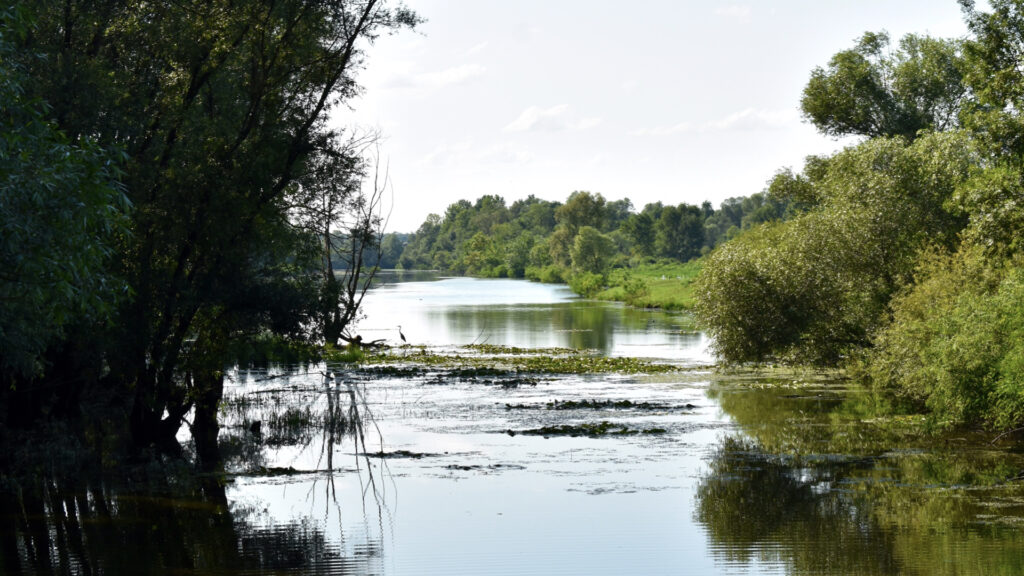
Together with 19 participants, we experimented with feral ways of sensemaking that invite open-ended, multisensory, and spontaneous encounters unfolding beyond the bounds of human control. Inspired by the movements and rhythms of local, other-than-human creatures, such as storks, mosquitoes, storms, and the river Sava, as well as the artistic strategies of dérive (including their flaws), we drifted with the local ecologies and invited pathways towards care-full co-habitation.

To navigate through these space-times, we experimented with various performative and speculative sense-making practices including walking, listening, storytelling, and forming relations. This feral investigation resulted in co-creative, performative outcomes – or fragments – in diverse forms, including a nonbinary wayfinding system, a synesthetic map, a memory seed bank, a meditative embodiment of a river, and a ritualistic speculation on local biodynamic culture that were documented as short videos and later turned into the Feral Fragments of Lonjsko Polje film.
The drift
In Lonjsko, we based ourselves in the village of Čigoč, in the local family-run accommodation Tradicije Čigoč – a traditional wooden cottage purposely re-built in an architectural style that is typical for the region. Tradicije was our nest where we lived, slept, ate, talked, and danced together for four days. Our daily wetlands explorations and reflections started and ended in the common workshop room which we named the CottageCore, and which we continued filling with various props, prompts, foraged materials, and stories collected through our drifts.

At the start of the event, we asked participants to introduce themselves through their favourite other-than-human creatures and move around the wetlands with/as these creatures, which ranged from a snail to a phoenix. After that, the participants formed five groups around the five elements – water, air, metal, earth, and fire – based on the relations these creatures had with the elements within the context of the local environment.
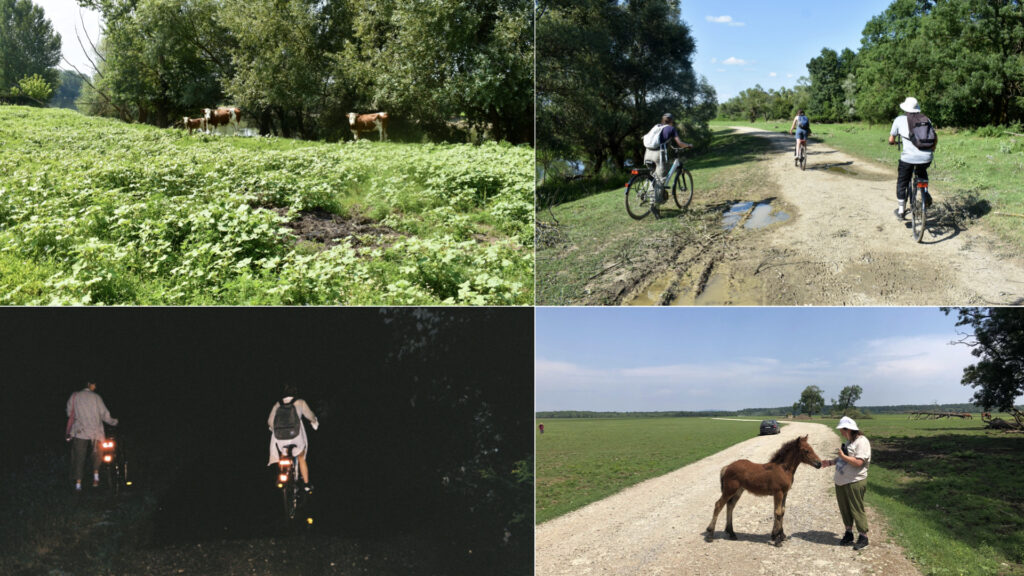
In practice, our wetlands drifts took various shapes and forms, involving activities such as walking, running, cycling, swimming, crawling, foraging, recording sounds, filming, and sometimes simply remembering. After each drift, we returned to the CottageCore to share our different experiences, observations, and sensory impressions with the whole group, slowly shaping the room into a growing (and more intensely alive) feral archive.
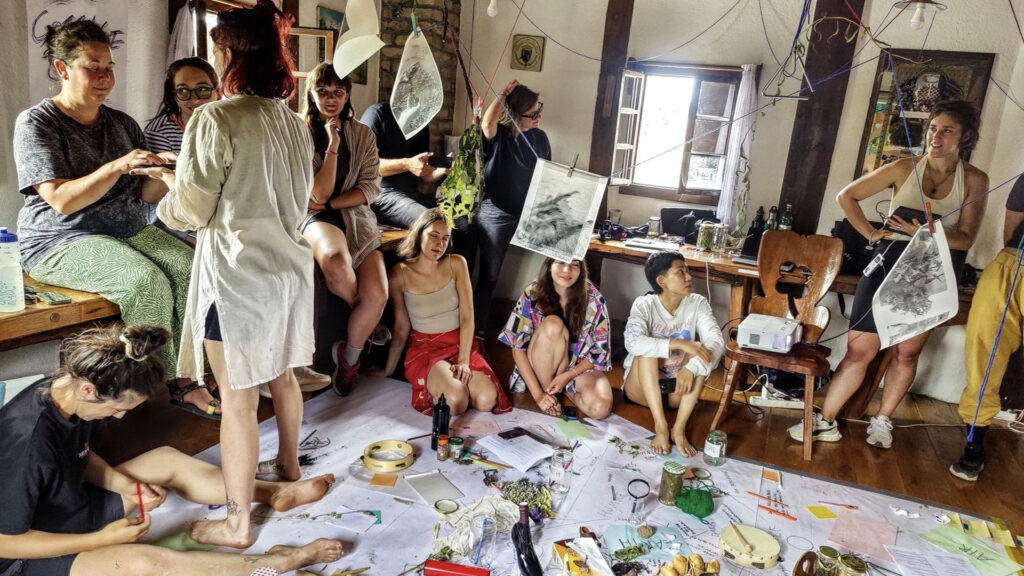
Through the process of making the fragments, we were able to collectively explore, learn about, and make sense of the different more-than-human relations that make up the Lonjsko Polje ecologies. For us in Open Forest Collective, these fragments are co-creative expressions that also serve to be feral data enriching our research, as well as our living–with more-than-human worlds.
Feral Fragments
The following feral fragments were co-created by the five groups of participants who connected, via their other-than-human creatures shared at the start of the event, around the five elements – earth, water, air, metal, and fire.
Fragment: Earth
Horn Of Plenty
By Aleksandra Drecun, Korana Mileusnić, Laura Middlehurst and Maria Heinrich
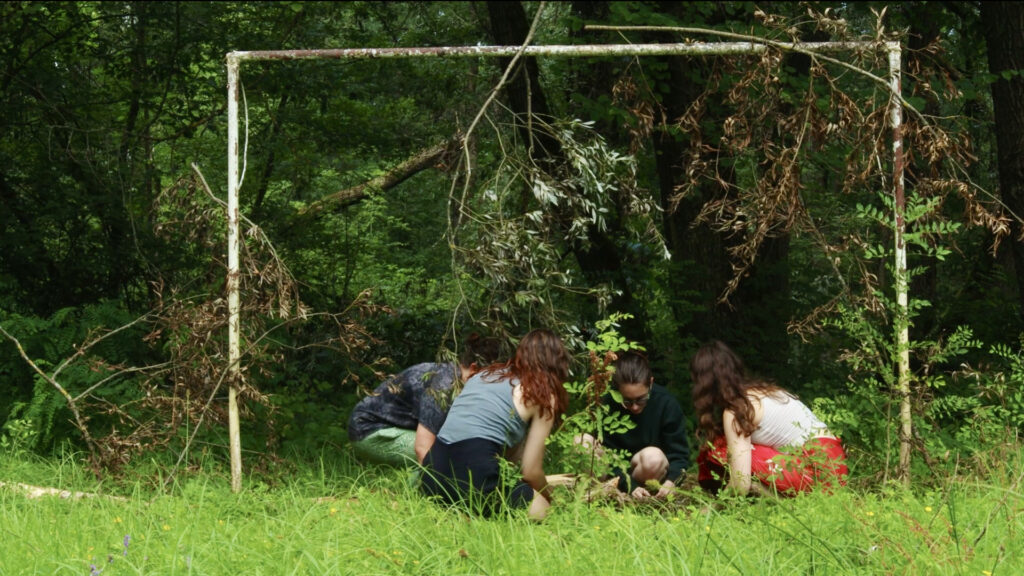
“That, I think, is the power of ceremony: it marries the mundane to the sacred. The water turns to wine, the coffee to a prayer. The material and the spiritual mingle like grounds mingled with humus, transformed like steam rising from a mug into the morning mist. What else can you offer the earth, which has everything? What else can you give but something of yourself? A homemade ceremony, a ceremony that makes a home.” – Robin Wall Kimmerer: Braiding Sweetgrass
Disguised as our earth-bound feral alter-egos, we roamed the land into the forests and pastures of Lonja for three days, gathering the natural treasures that called to us. We positioned ourselves as humans in this fluctuating and inherently anthropomorphic landscape, wanting to honour the land and animals, whilst building on the symbiotic relationships already inherent in this fragile environment.

In the realm of agricultural innovation, Rudolf Steiner’s vision shines through biodynamic culture, portraying farms as holistic realms where soil, plants, animals, and human care intertwine seamlessly. This symphony of cooperation is woven with conscientious methods such as composting, the companionship of animals, and an embrace of diverse botanical life. At its heart, the horn manure preparation (preparation 500) encapsulates the essence of this ethos, as cow manure metamorphoses within a buried horn, enriching plants with fortified root systems – a testament to the intricate blend of spirituality and ecological mindfulness that grace the pages of farming history.
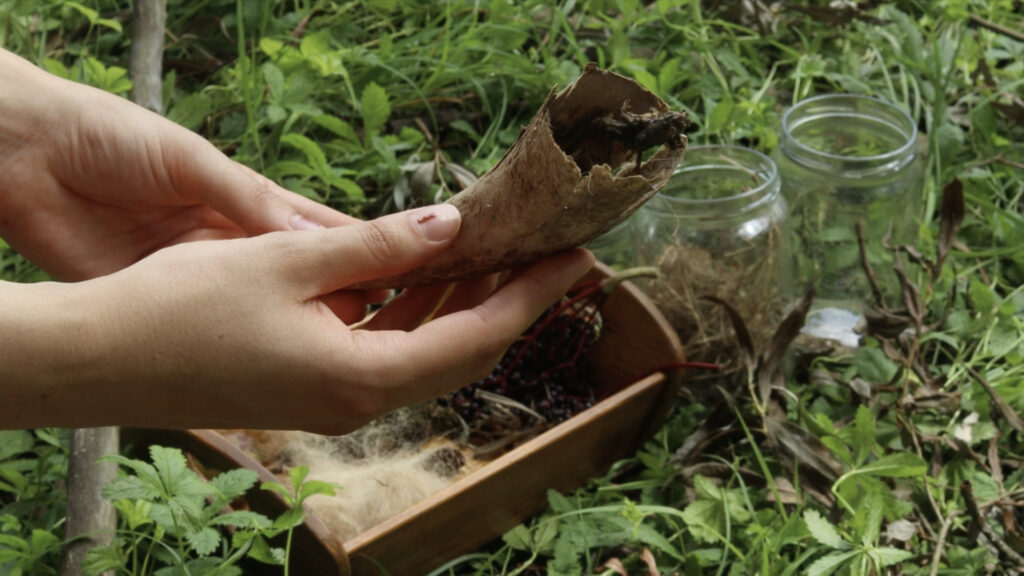
We developed a reciprocal relationship of gifting that offers an alternative to the primitive accumulation of natural resources by extending value chains. Our inspiration were the gifts we received from the wetlands, such as small objects, sounds, and feelings. Through these gifts flowed the values of kinship, multi-species connections, and the fostering of care.
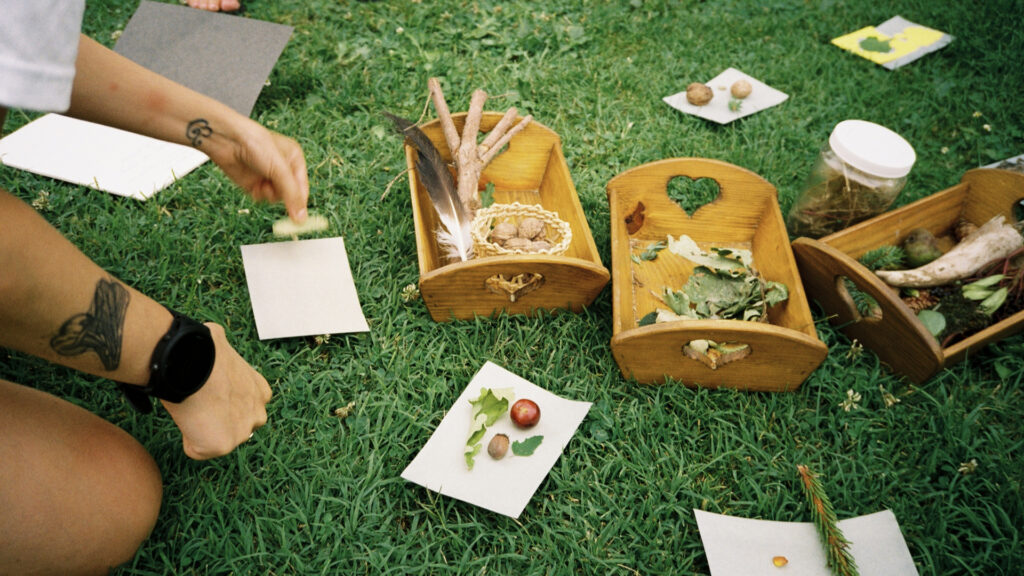
We gathered these objects in a discarded cow horn, our horn of plenty. This vessel embodied both the myths and relationships within the wetlands and our ceremonial offering of gratitude. The horn of plenty became a ritual, a gift, and a reciprocal act of care.
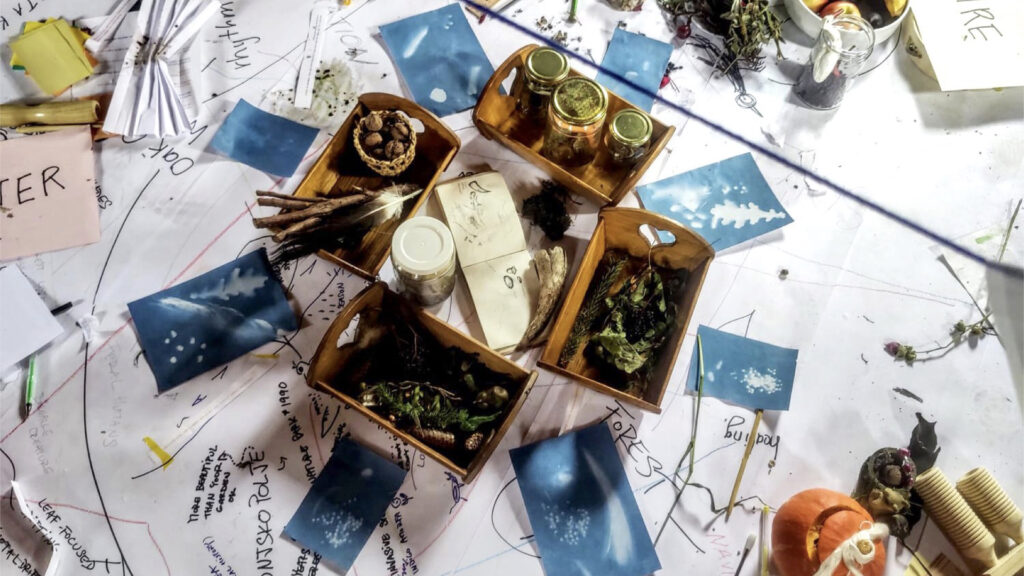
Fragment: Water
Embodying The River
By Meda Retegan and Anna Martić
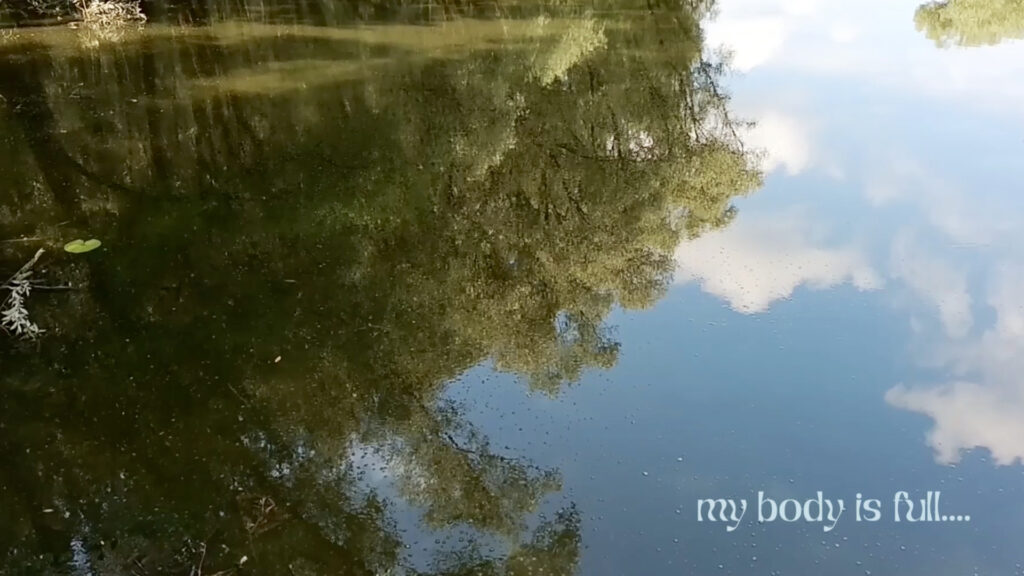
“Embodying the River” is a meditation on what it means to open yourself up to other modes of being and allowing your perspective to shift and to let go of restrictions of what is, and what could be. Water is our impenetrable gift continuing to bind all beings together.
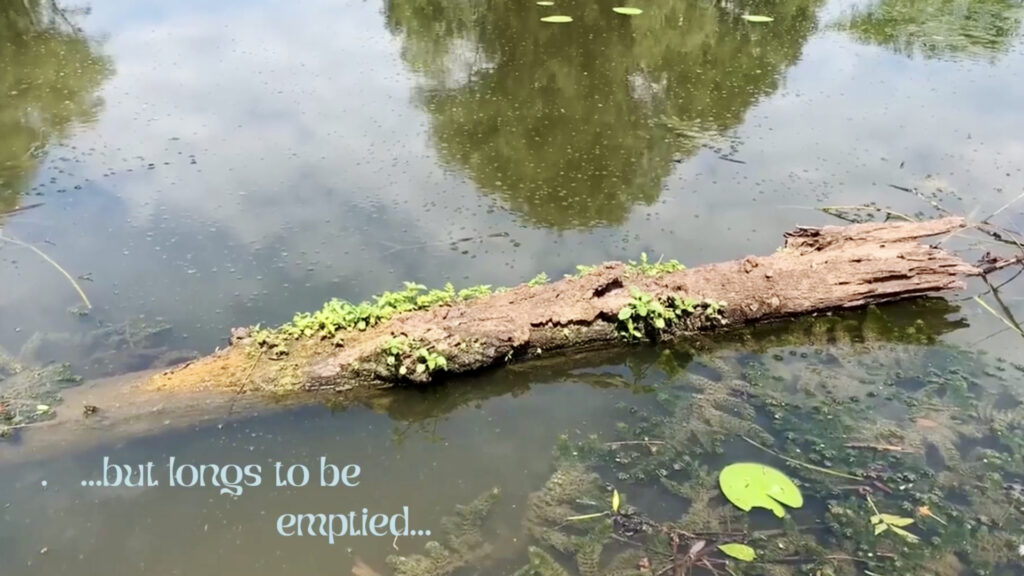
We are bodies in bodies of water regardless of shape and shell. In aiming to seek out this interspecies bond, we allow the feral side within us to reappear. The River takes over and elevates us to a long-forgotten equilibrium.
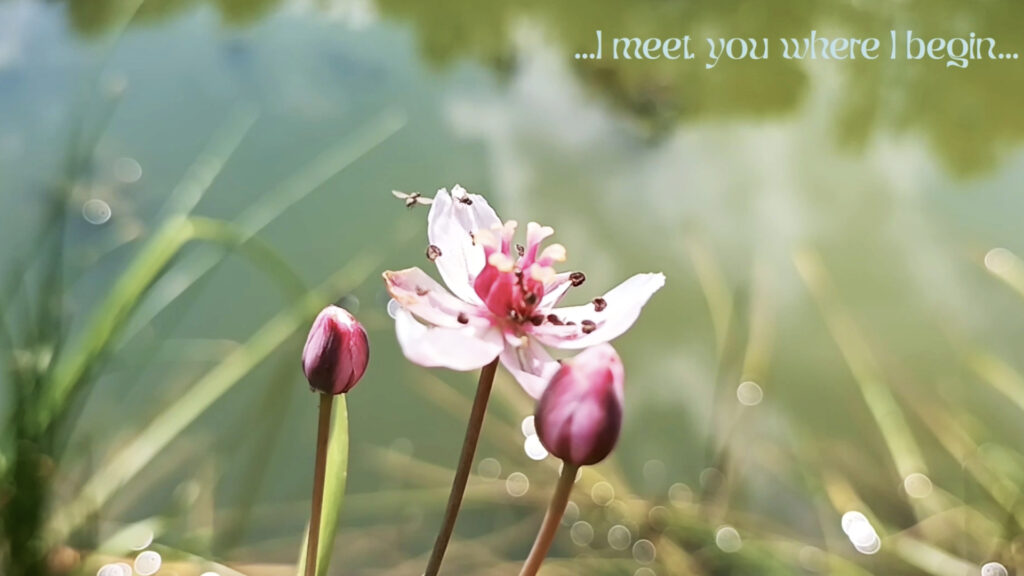
//
where the light doesn’t reach
embraces are exchanged
life emerges
tossing and turning in all directions
my body is full but longs to be emptied
your body craves pouring
I meet you where I begin
and you end
together we continue from there
//
In becoming,
We let go
From me,
To we
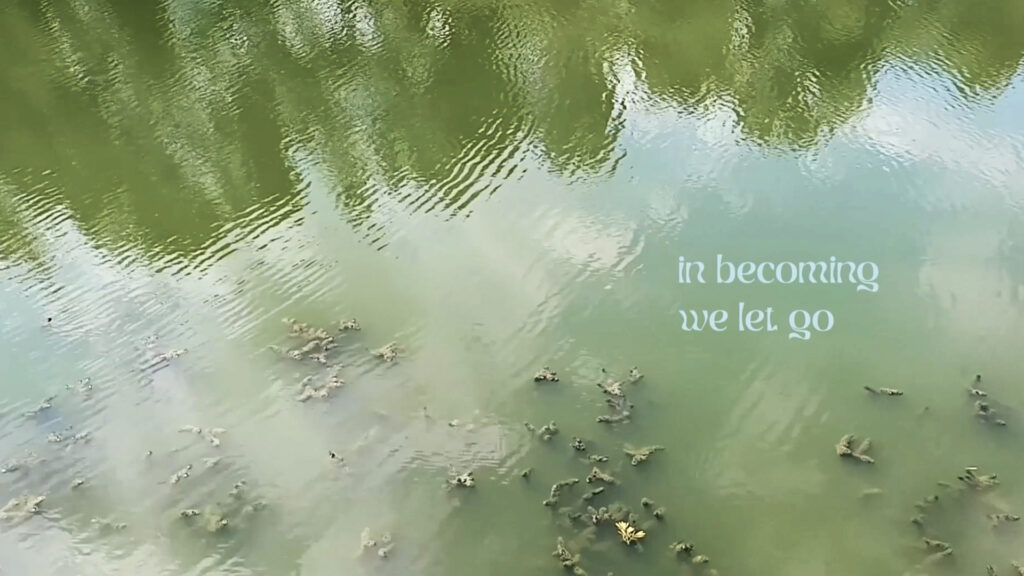
Fragment: Air
Weaving Memories of Lost Seeds
By Sara Gurdulic, Ebba Pijl, Ela Meseldzic and Daniella Ruffino
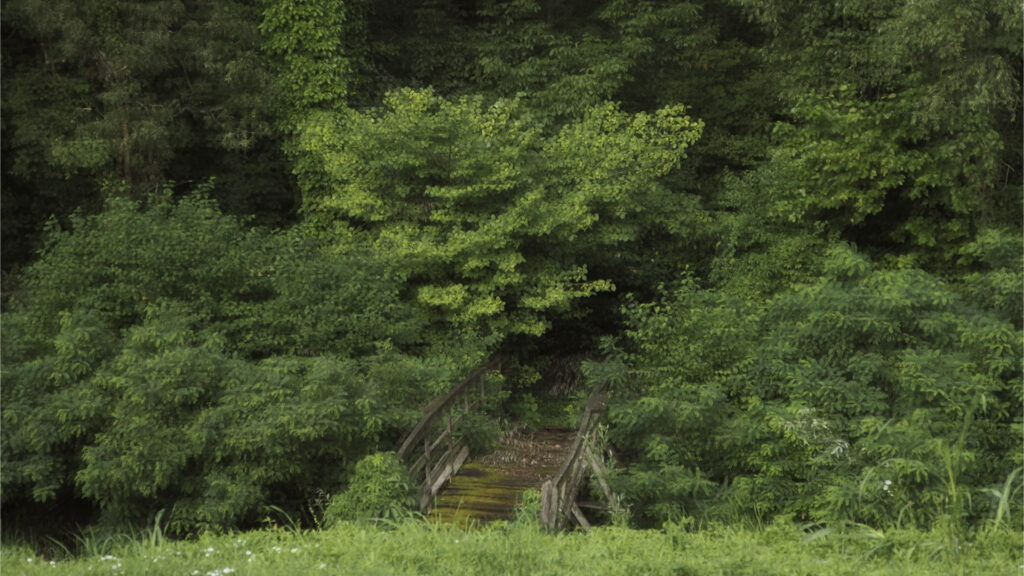
an impulse
a response
moving the landscapes
retraction of the Pannonian Sea poured warmth in the crevices. imagine a life of a we/ [as] t [e] land,
wavering corn landscapes lost the linen rituals,
a decaying path of a lost seed tells a story:
of shared labour
of shared leisure
of shared struggles
of shared memori⁞es
of the rising tides and -future- rejuvenating cycles
margins are once again diffusing
reclaim the tension⁞s
embrace the tide⁞s
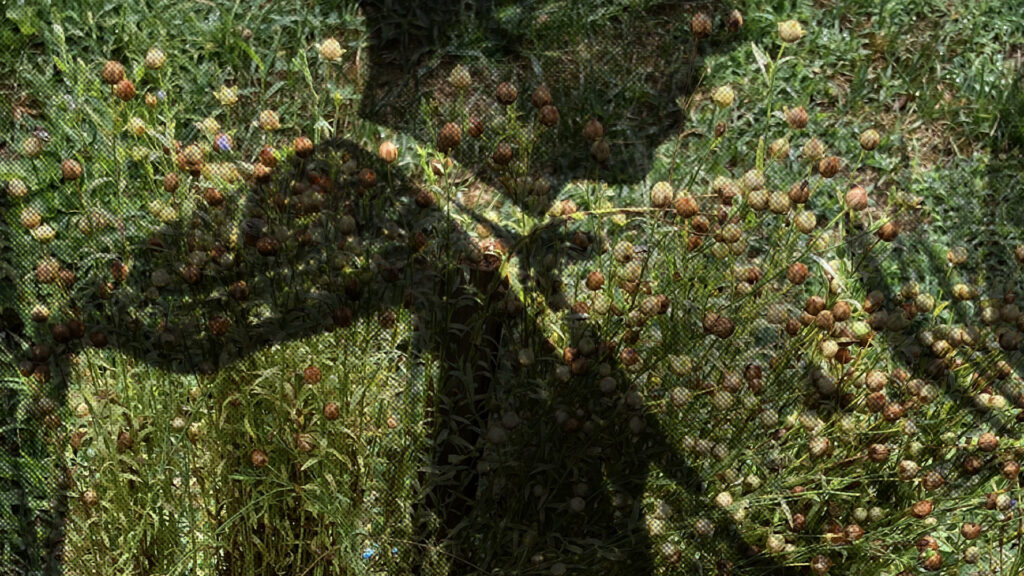
We arrive at the Lonja Wetlands, an ever-changing alluvial expanse. There’s no power. A massive storm has swept across the country. We go to bed within the glow of candlelight & thick linen sheets. In the morning we are unplugged and awake to the ebb and flow of the landscape. The wild moss, reeds and oak mingle with domesticated geraniums, corn and plum trees. Water fills and drains, drawing down into the soil and ascending into the air; creating weather patterns, sustenance, and resources. Amid this fecund landscape we meet an old woman weaving linen. Energy from plants, animals and the sun fuels this fine skill. A seeding flax plant sits in a pot.
Can seeds transform into vessels that carry narratives and transcend the boundaries of time? Tales flow freely, unburdened by temporal constraints.
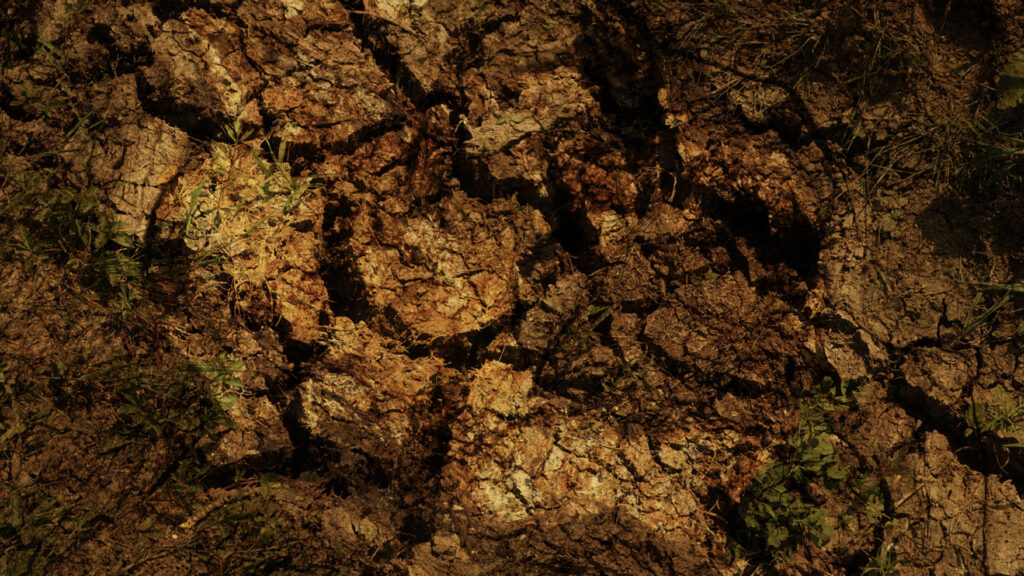
Once common and growing abundantly in this area, for fabric and fodder, the flax represents a wild abandonment from local industries and closer connections to land. Within its husk are the legacies of generations, of traditions and rituals forgotten, songs hummed for plant strength, a heritage interwoven with soil and water and a spirit of resilience that knits past to present. Seed memories can be portals for revitalising traditions that promote sustainable coexistence and responsible stewardship of the land.
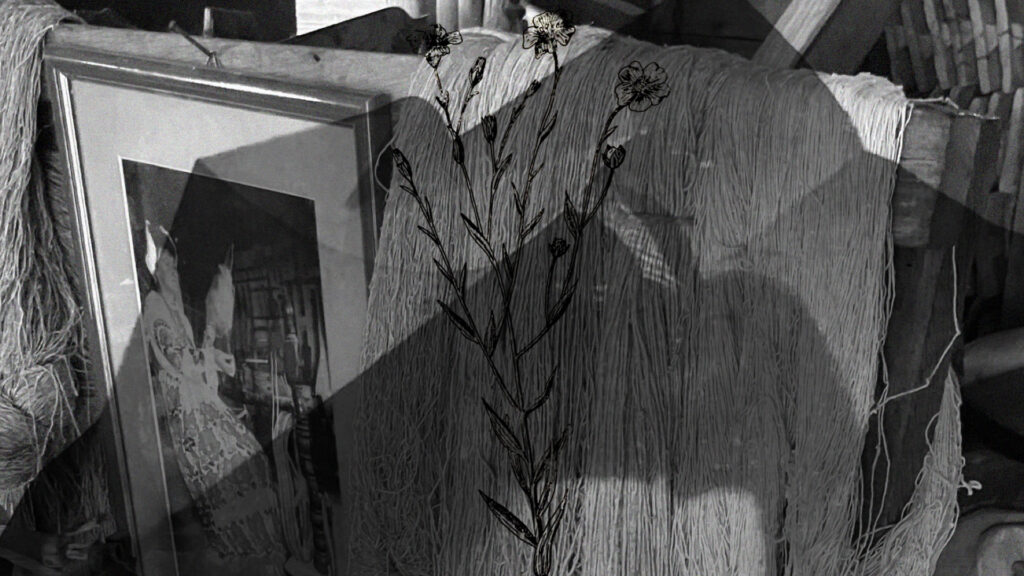
Tales of the flax seed and similar entities inspire a remembrance of the profound interdependence that sustains life on Earth, fostering a renewed appreciation for the delicate dance between humans and nature.

Fragment: Metal
Imagining with Lonja Wetlands through Sensory Disruption
By Inés Fernández Elhordoy, Sylwia Mieczkowska, Ella Papenfus and Nastja Ambrožič
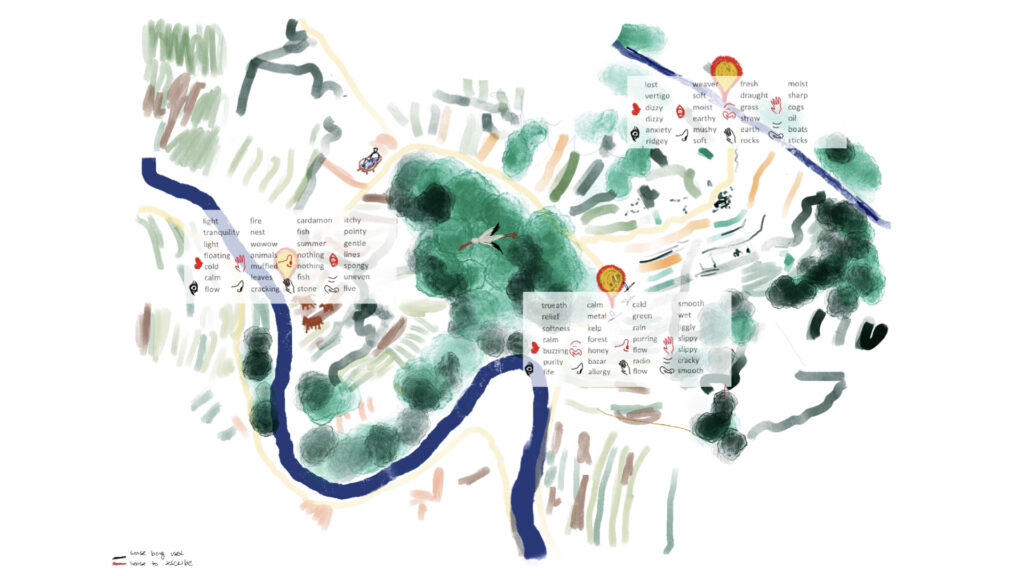
Prompted to “Find a border, imagine its texture, and taste the landscape,” we explored borders with a pinch of imagination. Questions arose: What constitutes a border? Is it a tangible entity, or fragment of imagination? The dérive within Lonja Wetlands merged in the in-between spaces of wild-domestic, natural-fabricated, and physical-virtual. Guided by the drift prompt co-created during the event, our concept of sensory disruption emerged in probing our own limits and borders as parts of the wetlands. Through synaesthesia, we pushed our sensory, bodily, and imagination limits. Gathering data via drifts, we mapped fragments of a synesthetic map of the wetlands. We tried various easy to sense unconventionally – describing touchless sounds by scents, for example. Artificial Intelligence (AI) turned descriptions into spot-on (and not so spot-on) images. Boundaries of experience transcended.
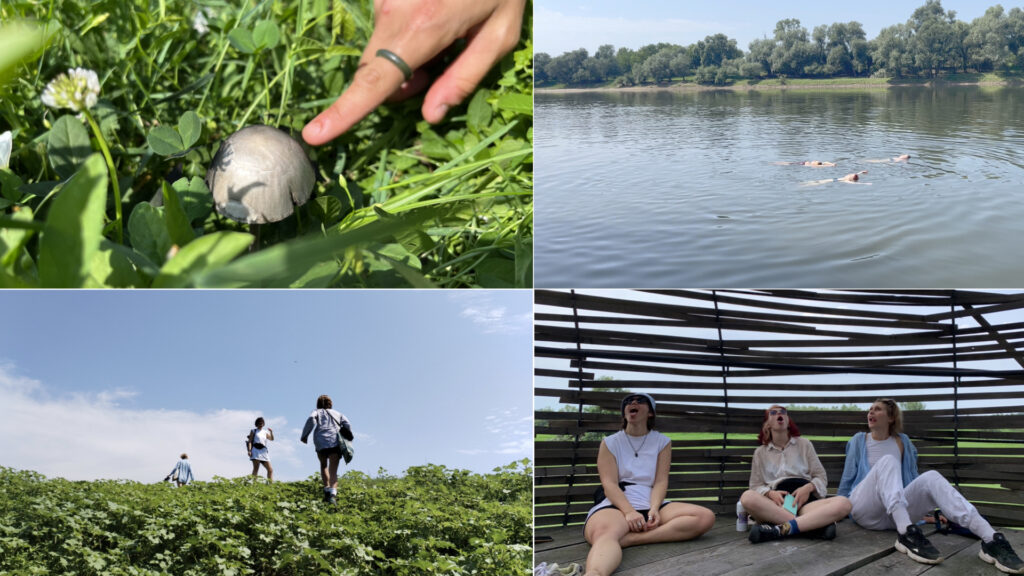
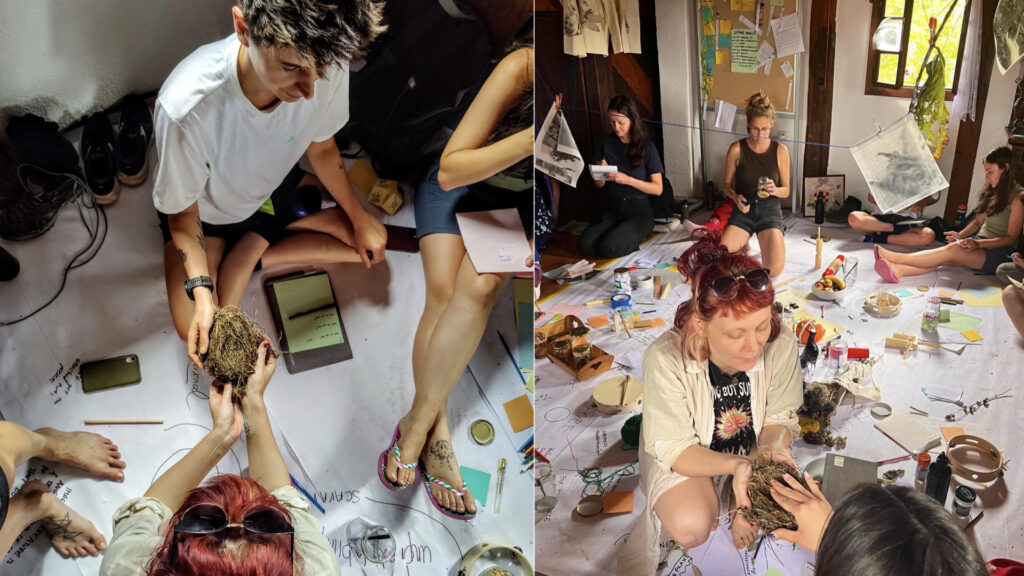
Fragment: Fire
Liminal Wayfinding
By Bethany Copsey and Sarah Kilkenny
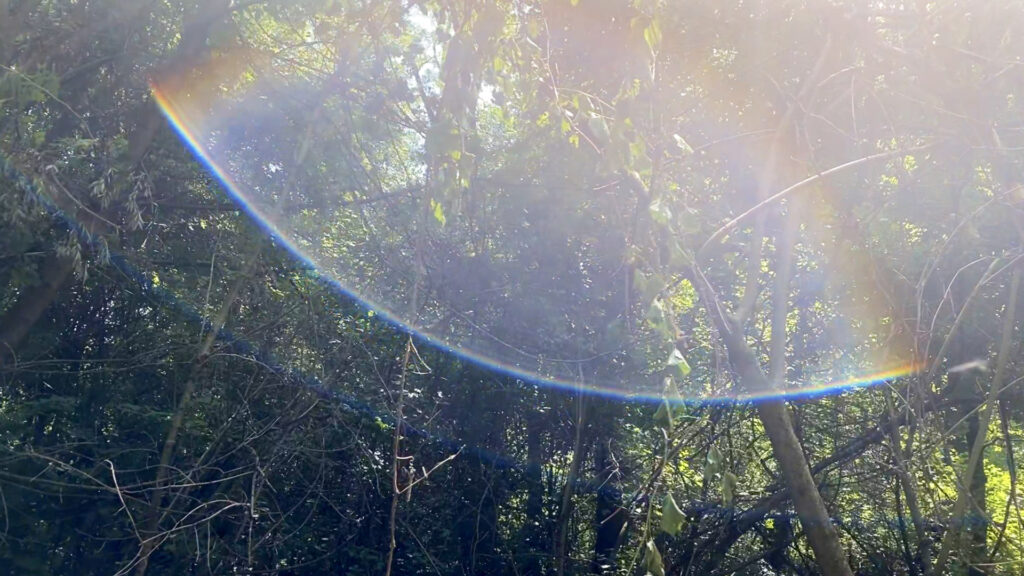
During our feral drifts through Lonja Wetlands, we noticed and were drawn to the liminality of the space. For example, guided by the sun, we found that points of destruction in the tree canopy created a space for new life to thrive, and in decaying wood we saw evidence of life and death cycling. These were not the clear binaries we often witness expressed in anthropocentric thoughts.
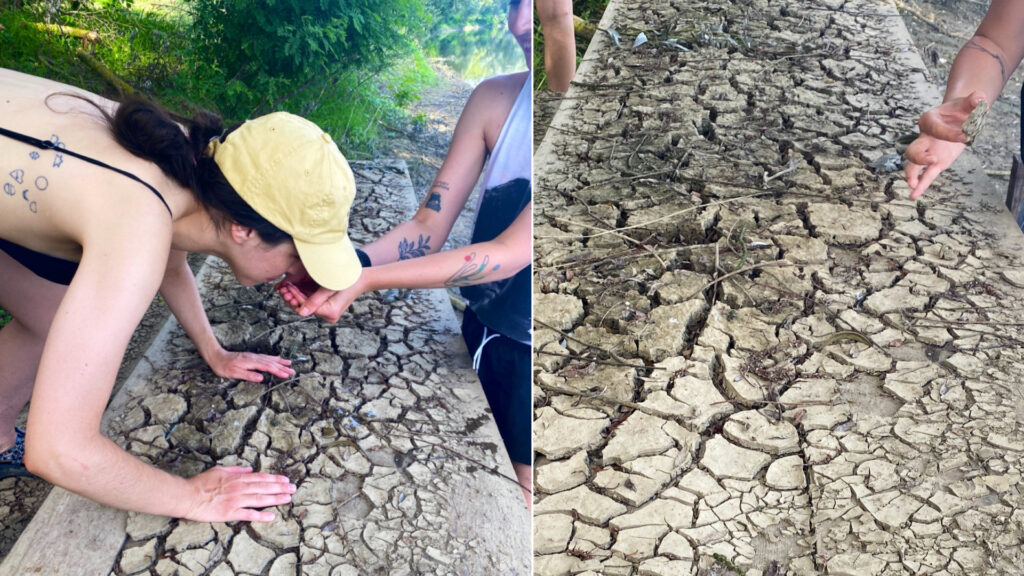
Inspired by our drifting prompts, we wanted to play with wayfinding. We disrupted the convention of journeying with a map to a specific location and instead tried to create a toolkit for drifting away from binaries – such as dead/alive, nature/culture, feminine/masculine – and towards liminality. We produced a series of activities and games as prompts for both drifting and discussion.
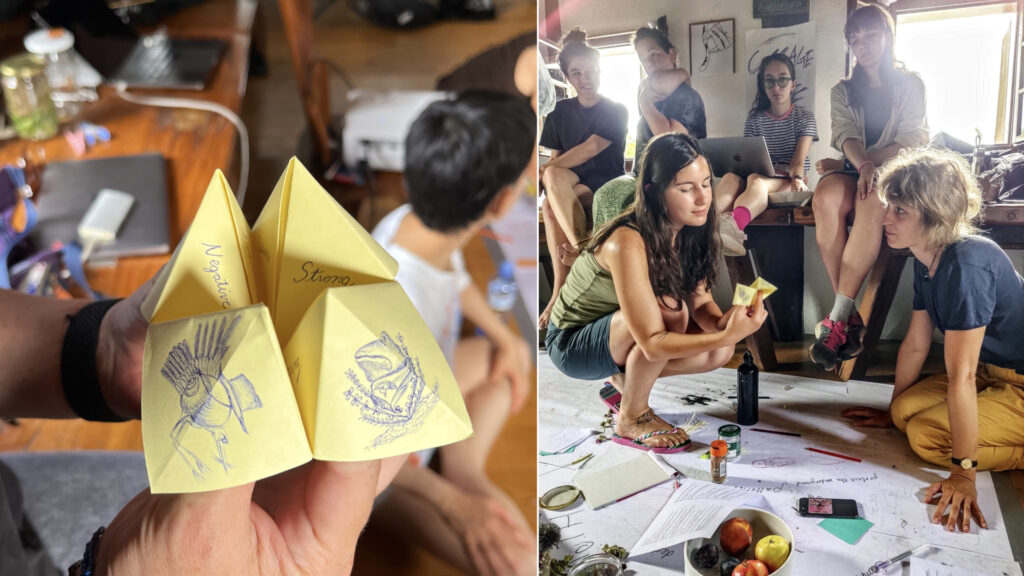
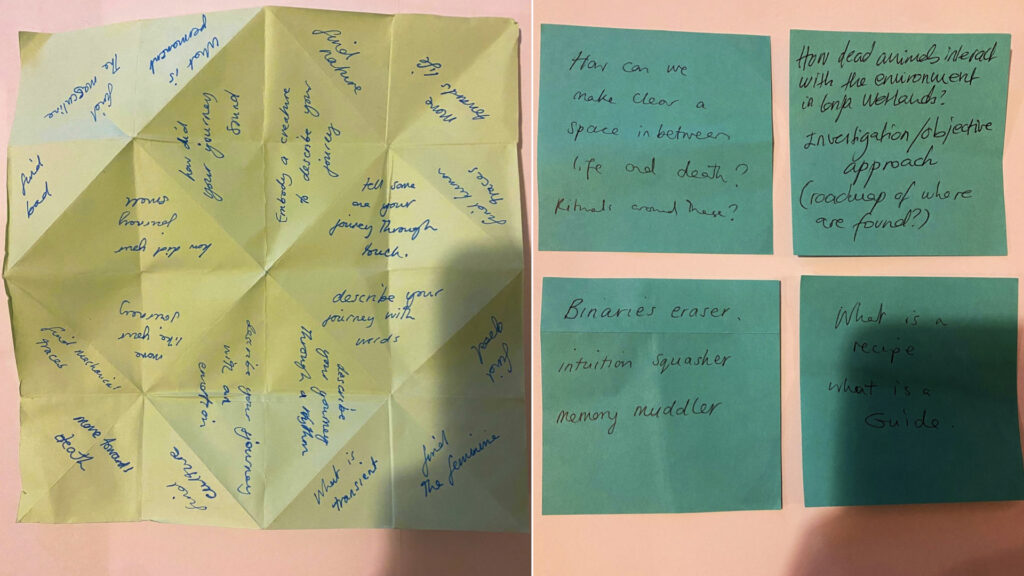
We would like to express our thanks to Park Prirode Lonjsko Polje, Tradicije Čigoč, rivers Sava and Lonja, and all Lonjsko Polje creatures for kindly letting us stay-with the wetlands.